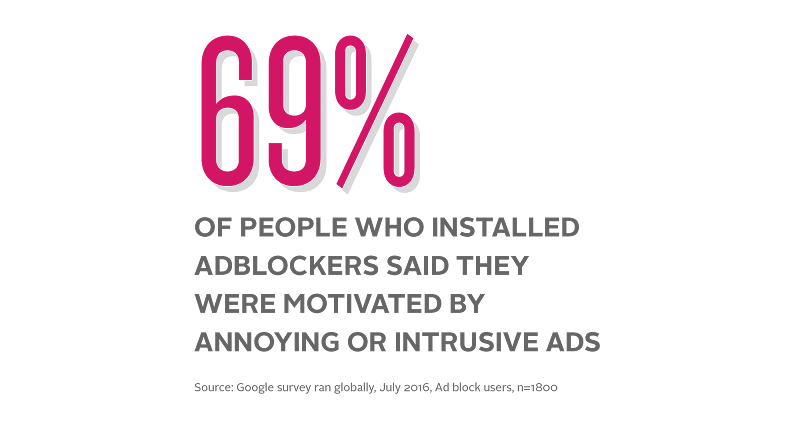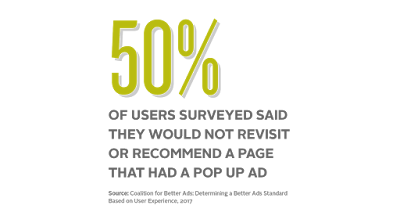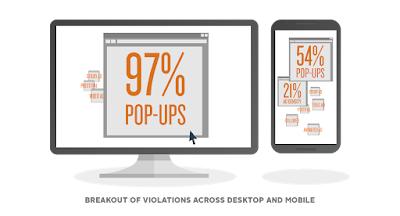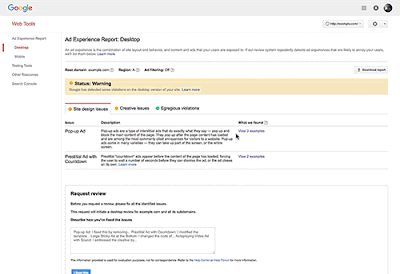A free and open web is a vital resource for people and businesses around the world. And ads play a key role in ensuring you have access to accurate, quality information online. But bad ads can ruin the online experience for everyone. They promote illegal products and unrealistic offers. They can trick people into sharing personal information and infect devices with harmful software. Ultimately, bad ads pose a threat to users, Google’s partners, and the sustainability of the open web itself.
We have a strict set of
policies that govern the types of ads we do and don’t allow on Google in order to protect people from misleading, inappropriate, or harmful ads. And we have a team of engineers, policy experts, product managers and others who are waging a daily fight against bad actors.
Over the years, this commitment has made the web a better place for you—and a worse place for those who seek to abuse advertising systems for their own gain.
In 2016, we took down 1.7 billion ads that violated our advertising policies, more than double the amount of bad ads we took down in 2015. If you spent one second taking down each of those bad ads, it’d take you more than 50 years to finish. But our technology is built to work much faster.
Last year, we did two key things to take down more bad ads. First, we expanded our policies to better protect users from misleading and predatory offers. For example,
in July we introduced a policy to ban ads for payday loans, which often result in unaffordable payments and high default rates for users.
In the six months since launching this policy, we disabled more than 5 million payday loan ads. Second, we beefed up our technology so we can spot and disable bad ads even faster. For example, “trick to click" ads often appear as system warnings to deceive users into clicking on them, not realizing they are often downloading harmful software or malware.
In 2016, our systems detected and disabled a total of 112 million ads for “trick to click,” 6X more than in 2015.
Here are a few more examples of bad ads we took action against in 2016:
Ads for illegal products
Some of the most common bad ads we find online are ads promoting illegal activities or products. Although we've long had a policy against bad ads for pharmaceuticals, last year our systems detected an increase online.
We disabled more than 68 million bad ads for healthcare violations, up from 12.5 million in 2015.
Similarly, we saw more attempts to advertise gambling-related promotions without proper authorization from regulators in the countries they operate.
We took down more than 17 million bad ads for illegal gambling violations in 2016.
 |
| 17M ads removed for illegal gambling violations |
Misleading ads
We don't want you to feel misled by ads that we deliver, so we require our advertisers to provide upfront information for people to make informed decisions. Some ads try to drive clicks and views by intentionally misleading people with false information like asking, “Are you at risk for this rare, skin-eating disease?” or offering miracle cures like a pill that will help you lose 50 pounds in three days without lifting a finger.
In 2016, we took down nearly 80 million bad ads for deceiving, misleading and shocking users.
 |
| 1,300+ accounts suspended for tabloid cloaking |
Bad ads on mobile
If you’ve ever been on your phone and suddenly, without warning, ended up in the app store downloading an app you’ve never heard of, a “self-clicking ad” could be to blame. In 2015, we disabled only a few thousand of these bad ads, but
in 2016, our systems detected and disabled more than 23,000 self-clicking ads on our platforms, a huge increase year over year.
Ads trying to game the system
Bad actors know that ads for certain products—like weight-loss supplements or payday loans—aren’t allowed by Google's policies, so they try to trick our systems into letting them through.
Last year, we took down almost 7 million bad ads for intentionally attempting to trick our detection systems.
In 2016, we saw the rise of
tabloid cloakers, a new type of scammer that tries to game our system by pretending to be news. Cloakers often take advantage of timely topics—a government election, a trending news story or a popular celebrity—and their ads can look like headlines on a news website. But when people click on that story about Ellen DeGeneres and aliens, they go to a site selling weight-loss products, not a news story.
To fight cloakers, we take down the scammers themselves, and prevent them from advertising with us again.
In 2016, we suspended more than 1,300 accounts for tabloid cloaking. Unfortunately, this type of bad ad is gaining in popularity because people are clicking on them. And a handful of scammers can pump out a lot of bad ads: During a single sweep for tabloid cloaking in December 2016, we took down 22 cloakers that were responsible for ads seen more than 20 million times by people online in a single week.
Promoting and profiting from bad sites
When we find ads that violate our policies, we block the ad or the advertiser, depending on the violation. But sometimes we also need to suspend the website promoted in the ad (the site people see after they click on it). So, for example, while we disabled more than 5 million payday loan ads last year, we also took action on 8,000 sites promoting payday loans.
Here are some examples of common policy violations we saw among
bad sites in 2016:
- We took action on 47,000 sites for promoting content and products related to weight-loss scams.
- We took action on more than 15,000 sites for unwanted software and disabled 900,000 ads for containing malware.
- And we suspended around 6,000 sites and 6,000 accounts for attempting to advertise counterfeit goods, like imitation designer watches.
 |
| 6,000 sites and 6,000 accounts removed for attempting to sell counterfeit goods |
Publishers and website owners use our AdSense platform to make money by running ads on their sites and content, so we have strict policies in place to keep Google's content and search networks safe and clean for our advertisers, users and publishers. When a publisher violates our policies, we may stop showing ads on their site, or even terminate their account.
We've had long-standing policies prohibiting AdSense publishers from running ads on sites that help people deceive others, like a site where you buy fake diplomas or plagiarized term papers. In November, we expanded on these policies, introducing a new
AdSense misrepresentative content policy, that helps us to take action against website owners misrepresenting who they are and that deceive people with their content. From November to December 2016, we reviewed 550 sites that were suspected of misrepresenting content to users, including impersonating news organizations. We took action against 340 of them for violating our policies, both misrepresentation and other offenses, and nearly 200 publishers were kicked out of our network permanently.
In addition to all the above, we support industry efforts like the
Coalition for Better Ads to protect people from bad experiences across the web. While we took down more bad ads in 2016 than ever before, the battle doesn’t end here. As we invest in better detection, the scammers invest in more elaborate attempts to trick our systems. Continuing to find and fight them is essential to protecting people online and ensuring you get the very best from the open web.
 |
Posted by Scott Spencer
Director of Product Management, Sustainable Ads |
































